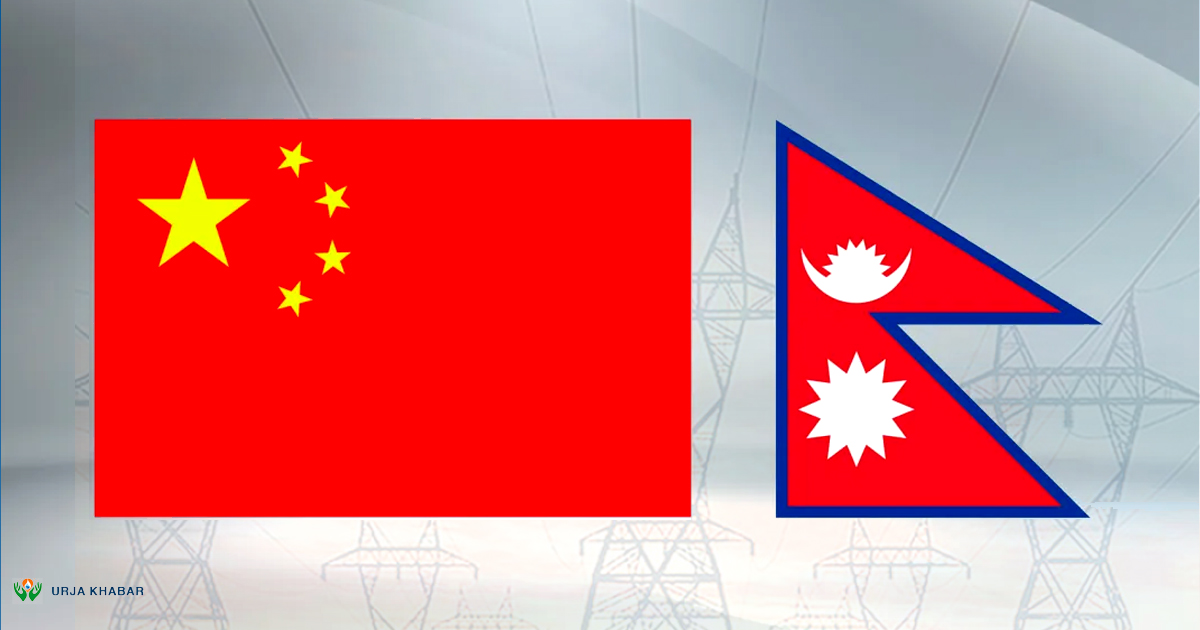
China has proposed a visit by a Chinese team to Nepal in February to hold a third round of discussions regarding the development of the Nepal-China Cross Border Transmission Line.
A Joint Technical Group comprising representaलभधकtives of the Nepal Electricity Authority and the State Grid Corporation of China had previously held two rounds of talks in China and Nepal, respectively, for the transmission line before the start of the Covid-19 pandemic.
Another meeting scheduled to be held in China could not happen due to continued Covid restrictions in China.

“Though the third round of discussion was supposed to be held in China, we expressed our concern about Nepali officials requiring to stay in quarantine in China,” said Komal Nath Atreya, chief of Ratamate-Rasuwagadhi-Kerung Transmission Line Project at NEA. “Then they proposed sending their own team to Nepal in February. It has been around a month since we received their letter about holding talks in February in Nepal.”
Atreya said he had already discussed the matter with the NEA Managing Director Kul Man Ghising who has planned to hold a discussion with the newly appointed Deputy Prime Minister and Energy Minister Rajendra Prasad Lingden regarding the matter.

“If the next round of meeting is held in February in Nepal, there may be discussions about exchanging the progress made regarding the construction of the cross-border power lines in each other’s territories,” said Atreya. “As the feasibility study of the Nepal section of the Ratmate-Rasuwagadhi-Kerung Transmission Line has already been completed, there will be a discussion on carrying out a detailed feasibility study as well.”
The last meeting was held in March 2020 when the officials of the State Grid Corporation of China had visited Nepal before Nepal imposed its first lockdown. According to Atreya, there was a plan to observe the site of an electricity facility, including a substation, in China’s Kerung in the next round of meetings, which could not happen.
Nepal and China have signed a cooperation agreement regarding the construction of this transmission project which was extended by two years when the Chinese Foreign Minister Wang Yi visited Nepal in March last year, according to the NEA. However, the timeline for both sides to carry out additional negotiations to develop this project has stretched.
The construction of the Nepal-China cross-border line is expected to open the doors for bilateral energy trade with China too. Currently, Nepal only has a single outside market—India—to sell and buy its electricity from.
India has allowed Nepal to sell a maximum 452.6MW of electricity from its 10 hydropower projects. Nepal has also been buying power from India during the dry season, particularly after December when the domestic power production slumps. Nepal and Bangladesh are seeking India’s support in trading electricity between them since the Indian territory falls between Nepal and Bangladesh.
The NEA in its annual report has stated that the 400kV transmission line from Ratamate in Nepal to Kerung in China will lead to Nepal-China power trading in the years to come.
Because of the Indian rules, Nepal cannot export power from the hydropower project where there is a Chinese element involved, such as investors and contractors. “So this project will be vital in attracting Chinese investments in Nepal’s hydropower sector with the aim of selling power to China,” said Atreya.
He said the 70km project, which can carry 5,000MW of electricity, would open the doors for power trade between Nepal and China.
NEA officials say the project is also important for domestic transmission of power. “Several hydropower projects are being built along the Trishuli corridor and supplying power from all those projects needs a high-capacity power line. So this 400kV power line in the area will also help evacuate the power for domestic power supply,” Atreya said.
This project’s power line will be connected to Ratamate Substation to be built under the assistance of the Millennium Challenge Corporation (MCC), a US aid agency.
With the 400kV Dhalkebar-Muzaffarpur power line being utilised for exporting power to, and importing from, India, the country currently does not have any transmission line of that capacity in operation for domestic use.
However, there are a dozen other cross-border transmission lines between Nepal and India with lower capacity. But no single cross-border power line has yet been built between Nepal and China.
Latest efforts to revive the bilateral talks on cross-border connectivity have moved ahead after China gave up its strict zero-Covid-19 rules.
In late December, a six-member Chinese team representing the China Railway First Survey and Design Institute Group visited Nepal to carry out a detailed feasibility study of the proposed Nepal-China cross-border railway.
They visited different sites of the proposed rail network and returned to China on Tuesday after conducting a reconnaissance survey, the first engineering survey in a previously unsurveyed territory for the purpose of project implementation.
Meanwhile, the NEA Engineering Company, a subsidiary company of NEA, is conducting the Environment Impact Assessment (EIA) of the project.
In late December last year, the Ratamate-Rasuwagadhi-Kerung Transmission Line Project called for written suggestions from stakeholders about the possible impact the project could have on physical infrastructure, biodiversity, social and cultural heritages, and the economic system of the area.
As per the notice, the feedback has been sought from local government, schools, hospitals, health posts, and other stakeholder institutions and individuals within seven days as part of identifying the study area (scoping) for the EIA. Possible districts to be affected by the project include Rasuwa and Nuwakot, according to the notice. “We are collecting feedback from stakeholders,” Atreya said.